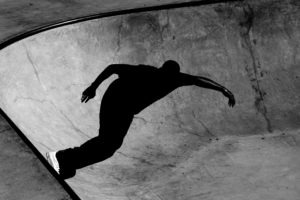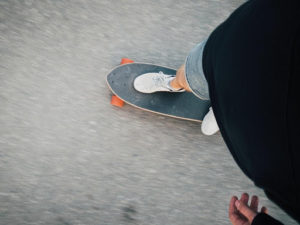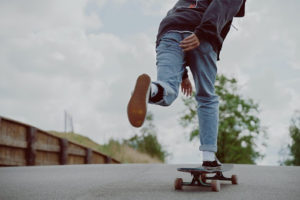You’ve finally got all of your individual skateboard parts together and are itching to put your first skateboard together, but don’t know where to start. Learning how to set up your own skateboard comes with several advantages, such as endless customization options and more. The process can seem daunting at first, but with practice and experience, shouldn’t take more than 30 minutes.
Follow our guide below to learn how to assemble your skateboard set up from the bottom up!
Skate Gear You’ll Need
Before you get started, it’s important to make sure you have all of your components on hand. You don’t want to be elbow deep in setting up your skateboard, only to find out you’re missing a piece halfway through!
- Skateboard deck
- Grip tape
- Screwdriver
- A pair of trucks
- 4 wheels
- 8 wheel bearings
- 4 spacers
- 8 bolts
- Skate tool
- Razor blade
Optional supplies you may want include:
- 2 risers
Now that you’ve gone over your checklist, it’s time to get down to the bread and butter of this article: setting up your skateboard from start to finish!
How to Apply Grip Tape
Applying the grip tape can be one of the most challenging parts of the setup process for beginners. Take your skateboard deck and locate the nose (front) and tail (back). If you’re a beginner and need help differentiating between the two, the nose tends to be slightly wider, while the tail is steeper.
Take your grip tape and carefully peel it from its backing entirely, making sure not to let it stick to anything. Apply one end on the nose or neck, ensuring it’s properly aligned, and press it down piece by piece so it lays flat. Try angling the grip tape to avoid air pockets. Grab your screwdriver and run or file it along the edges of the board, creating an outline. Next, take the razor blade and cut along the outline you created, keeping the blade at a 45-degree angle.
You can prepare for the next step in the process by poking holes in the grip tape right above the truck holes.
Mounting Skateboard Trucks
Place the bolts through the holes you punctured in the previous step. Optionally, you can place riser pads on the bolts, in between the deck and truck.
Next, you’ll add the trucks to the bolt with the kingpins facing the inside of the deck. Screw the trucks in securely and tighten the bolts in an “X” pattern with a skate tool or Allen wrench.
Install the Wheel Bearings
Start by removing the axle nut and speed washers. Put a bearing on the axle with the shield facing downwards and firmly press the wheels onto your bearings. You should feel the bearing slide in. If you hear a clicking or popping sound, the bearing has been correctly inserted. Repeat this step on all four wheels.
It may take a few tries to correctly insert the bearings. If you make a mistake or the bearing is crooked, carefully use the axle to wiggle the bearing out of the wheel.
If you have spacers on hand, you can use them to keep your bearings parallel to each other. Slide them onto the bearings and apply pressure on the wheel.
Adding the Wheels to the Trucks
Now that you’ve prepared your trucks, it’s time for the grand finale: screwing on your wheels.
Take one of the speed washers and replace it back on the axle. If you’re using spacers, you can insert one here. Otherwise, attach the wheel, and place the second washer on the outside to secure it in place. Tighten the nut with your skate tool or wrench, leaving enough wiggle room to allow your wheels to spin freely.
Test and Adjust Your Board Setup
As exciting as it may be to see your skateboard complete, it’s incredibly important to inspect your work before taking your board for a spin. If any parts are loose or improperly installed, your board may not hold together, and discovering this in the midst of riding isn’t something to be desired.
Take a good look at your work and make sure all of the components fit properly together and that nothing looks out of place. Make sure that all of your screws are evenly inserted and that the heads are completely level with the grip tape. You may need to give them a few more turns to ensure they are flush. Test your trucks by checking the baseplate for movement.
Once you’ve confirmed that all components are securely attached, it’s time to take your board for a test cruise. Start by simply standing on your board and rocking back and forth, then graduate to testing out turns and carves.
If you’re experiencing problems with turning, you might need to adjust the steering behavior of your trucks. This can be done by adjusting the kingpin. To make your trucks less responsive, tighten your kingpin nut to the right. To make them looser for easier steering, tighten them to the left.
If everything looks and feels good to you, your setup is complete! With a few more tries and practice, assembling your skateboard from start to finish should become a fairly easy process.











